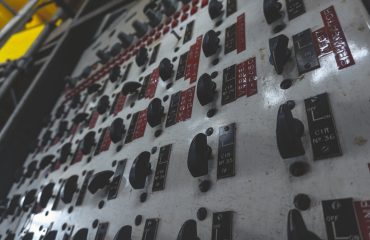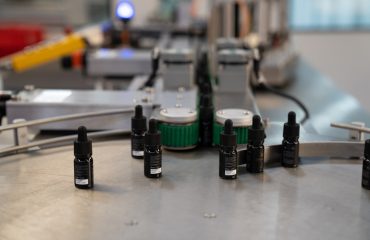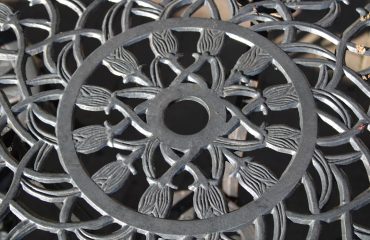Shot blasting is a powerful surface preparation technique used across numerous industries to clean, deburr, and prepare surfaces for subsequent processes like painting, coating, or welding. This comprehensive guide will delve into the intricacies of shot blasting, explaining the process, its benefits, and the various considerations involved.
Understanding the Shot Blasting Process: A Step-by-Step Breakdown
The shot blasting process involves propelling a stream of abrasive media, typically small, hard metallic or non-metallic particles (shot), at high velocity onto a workpiece’s surface. This high-impact bombardment effectively removes contaminants like rust, scale, paint, and other surface imperfections. The process typically involves these steps:
- Workpiece Preparation: The item to be blasted needs to be securely positioned within the blasting cabinet or chamber. This ensures consistent and safe operation.
- Media Selection: The type of abrasive media used depends on the material of the workpiece and the desired surface finish. Common media includes steel shot, chilled iron shot, glass beads, and plastic media.
- Blasting Operation: The abrasive media is propelled by centrifugal force (in a wheel-type blaster) or compressed air (in air-blast systems) onto the workpiece’s surface. The intensity and duration of blasting are carefully controlled to achieve the desired results.
- Post-Blasting Cleaning: After blasting, the workpiece is typically cleaned to remove any remaining abrasive media. This can involve brushing, vacuuming, or compressed air.
- Inspection and Finishing: A final inspection is conducted to ensure the desired surface finish and cleanliness have been achieved. Further surface treatments, such as painting or coating, may follow.
Types of Shot Blasting Equipment: Choosing the Right Tool for the Job
Various types of shot blasting equipment cater to different needs and scales of operation. The most common include:
- Wheel Blast Machines: These utilize a rotating wheel to accelerate the abrasive media, offering high-volume blasting ideal for large-scale applications.
- Air Blast Machines: Compressed air propels the abrasive media, providing more precise control and suitability for intricate parts or delicate surfaces.
- Cabinet Blasters: Enclosed cabinets offer a contained environment for smaller workpieces, ensuring worker safety and minimizing environmental impact.
- Portable Blasters: These are smaller and more mobile units ideal for on-site cleaning or smaller projects.
- Automated Systems: For high-volume production, automated systems provide consistent and efficient blasting with minimal manual intervention.
Benefits of Shot Blasting: Enhancing Surface Quality and Efficiency
Shot blasting provides numerous advantages over other surface preparation methods:
- Superior Cleaning: Removes rust, scale, paint, and other contaminants effectively, creating a clean surface ideal for coatings.
- Enhanced Adhesion: Creates a profile on the surface, improving the adhesion of subsequent coatings or paints.
- Improved Fatigue Strength: Can increase the fatigue strength of metallic components by removing surface imperfections.
- Deburring and Surface Finishing: Removes burrs and sharp edges, improving the surface finish and reducing the risk of damage.
- Increased Productivity: Automated systems significantly increase productivity compared to manual methods.
- Cost-Effective: While initial investment can be significant, the long-term cost-effectiveness is often substantial due to increased efficiency and reduced rework.
Safety Precautions in Shot Blasting: Protecting Workers and the Environment
Shot blasting presents potential hazards if not handled properly. Strict adherence to safety protocols is crucial:
- Personal Protective Equipment (PPE): Workers must wear appropriate PPE, including respirators, safety glasses, hearing protection, and protective clothing.
- Containment and Ventilation: Adequate containment systems and ventilation are essential to minimize dust and abrasive media exposure.
- Regular Equipment Maintenance: Regular maintenance and inspection of blasting equipment are vital to prevent malfunctions and ensure safe operation.
- Training and Supervision: Proper training and supervision of personnel are crucial to ensure safe operating procedures are followed.
- Environmental Considerations: Appropriate disposal methods for spent abrasive media and dust collection are essential to minimize environmental impact.
Applications of Shot Blasting: Across Diverse Industries
Shot blasting finds application in a wide range of industries:
- Automotive: Cleaning and preparing car bodies for painting.
- Aerospace: Cleaning and preparing aircraft components for coating.
- Construction: Cleaning and preparing steel structures for painting or coating.
- Manufacturing: Deburring and surface finishing of various parts.
- Marine: Cleaning and preparing ship hulls and other marine structures.
- Metal Fabrication: Preparing metal surfaces for welding or other processes.
Shot blasting is a versatile and powerful surface preparation technique with numerous applications across diverse industries. Understanding the process, equipment, safety precautions, and benefits is crucial for harnessing its full potential while maintaining a safe and efficient operation.
Tags: shot blasting, surface preparation, abrasive blasting, industrial cleaning, metal finishing




